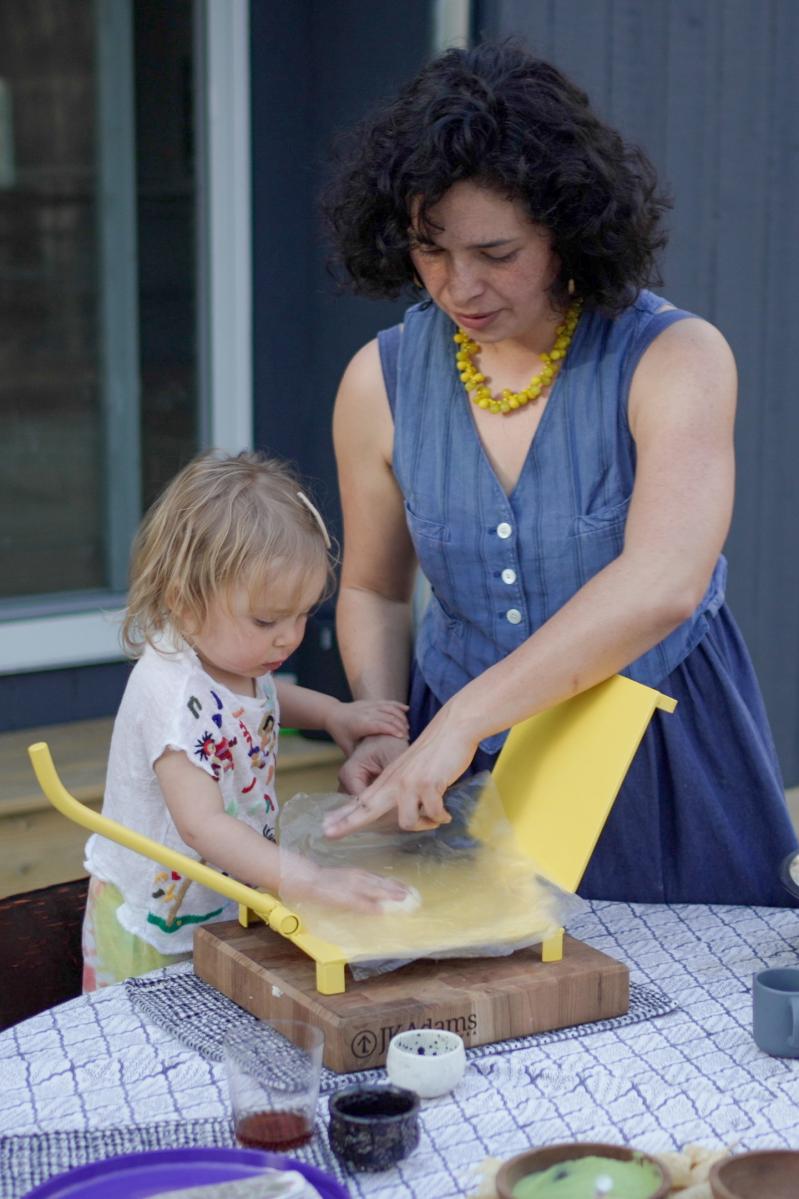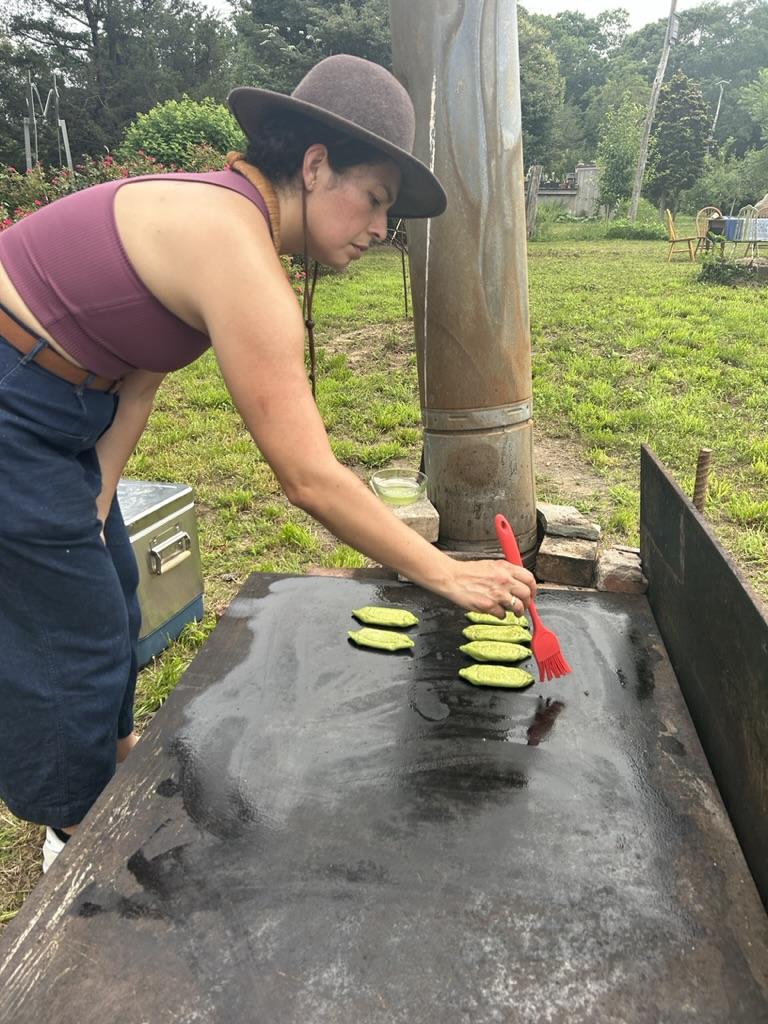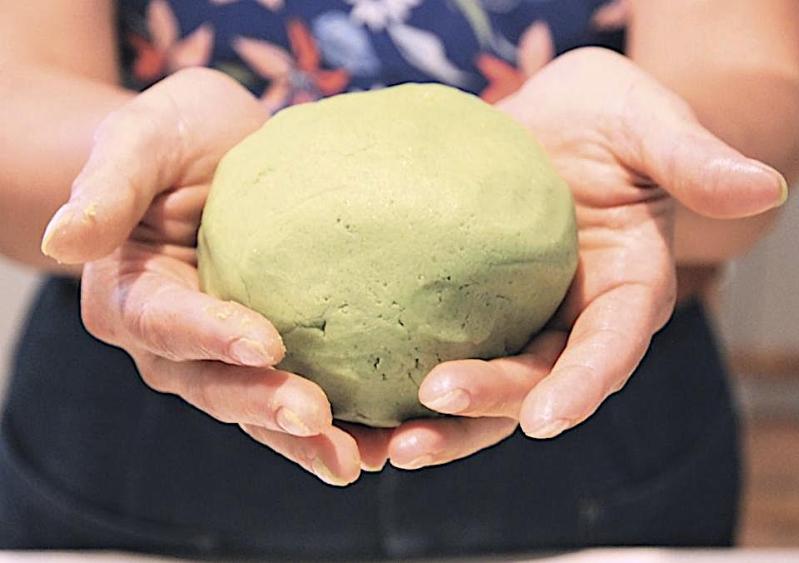Out of necessity and creative expression, cooking connects us to the distant places where we are from without the burden of having to describe political borders. Ask me where I'm from and I'd much rather cook something for you in response.
There’s a saying that captures the feeling of what it’s like to be a child of immigrants: soy ni de aqui, ni de alla. It means, “I’m not from here, or from over there.” Ask anyone whose parents were born across a border where they’re from and you won’t get a simple answer because there isn’t one. I am often asked if I’m Latina, Latinx, Chicano, half something else, Hispanic, and I get it; it would be so much easier for other people if I could check a box. Even if I wanted to, I couldn’t distill my life as a child of immigrants into one term because doing so would erase the ugly history of racism, colonization, and forced assimilation that we’ve gone through. It would erase my story and I’m not interested in doing that.
Whether it’s a detail like how my grandfather Fernando liked the yolk of his egg cracked and cooked through, or my mother’s recipe for arroz mexicano in which quantities and ingredients depend on what’s in your pantry at that very moment, recipes are more than remembered flavors. They are stories and strategies for survival that travel straight to our guts, reminding us of where we are from.
My mother is one of 13 siblings. Most of them grew up on a farm outside of Durango, Mexico. I imagine her life in stark contrast to mine and it fascinates me. I feel I’ve been given two ways of seeing: through the eyes of a jaded, suburban art-school kid, and through the eyes of a young person who left her country at 17. When we cook together, it feels like these two worlds collide and we communicate on a cosmic level, over pots of rice, roasting vegetables, and lately, while making tortillas de maiz from scratch.
My mother didn’t grow up making tortillas; she didn’t have time to spare while working two jobs plus overtime. We bought ours, like everyone else in the suburbs of Chicago did, from the supermercado that sold the good ones from la tortilleria. When I moved to the East End of Long Island, where there were none as delicious as the ones I could buy back home, I knew I needed to learn how to make them. However, I did not expect that learning how to make tortillas from scratch would bring me so much closer to that place where I’m from — but that’s what happened.
Tortillas are easily overlooked because they are undervalued; most people don’t know how they are made. You can buy a kilo of tortillas for less than the price of a baguette out here, which might lead you to think making them is easy and simple. I’m here to tell you that making tortillas is simple, but arriving there takes time.

It started innocently enough. I ordered a bag of heirloom maize from Masienda, a company that imports it from Mexico. I made my first batch of nixtamal with it, cooking and soaking the kernels in a solution of calcium hydroxide, slaked lime. I attempted to grind it with my husband’s Vitamix — it broke — and managed to make something edible. My first tortillas weren’t great, but I kept trying. I bought a metate, a mortar and pestle stone, and on my 38th birthday a Molinito — a rather large piece of equipment designed to grind masa between two basalt stones. My deep dive into the world of maize and masa was just beginning.
Through trial and error, I learned about hydration and heat; how long masa can sit out; what it tastes like when it sours, and how to make masa pancakes — the list is endless. I learned about patience when my attempt to grow maize turned into a lesson on humility. When I started a small tortilleria and sold masa and tortillas at the Springs Farmers Market through the pandemic, I learned how important community spaces like these are and how crucial community in general is to our survival. I reshaped the maize narrative I was taught, as lessons in reciprocity and ingenuity revealed themselves through researching corn and its importance to Indigenous communities in Mexico and the United States.
Through all of this, I became a mother. Francesca is 2 years old now, and I love watching her play with masa and eat it. I now understand the wisdom our ancestral foodways carry, and it brings me so much joy to facilitate her access to this knowledge through something as joyful as food.
RECIPE: Tortillas de Maiz
You don’t have to grind your own nixtamal to make delicious corn tortillas. This recipe is for tortillas de maiz made with masa harina. Masa harina is a flour made from dehydrated nixtamal, and it’s a really great substitute for freshly ground masa. I like the Masienda brand because it is more flavorful and comes in four colors, but whatever masa harina you find will work the same. Makes 12 tortillas.
Ingredients
1 C. masa harina, plus more for kneading
1 C. water, plus more for kneading
Tools
Tortilla press (a heavy book or a sturdy pan will also work)
A plastic produce bag or parchment paper cut in 2 equal rounds, large enough to cover the surface of your press
Cast-iron skillet or comal
Directions
Add masa harina to a bowl with water, stir with fork to loosely combine, and let sit for 15 minutes under clean dish towel.
Wet your hands and knead the dough until it’s smooth. If masa is sticking to your hands, sprinkle a little more masa harina and knead to combine. If your masa feels dry, add a little more water and knead until it’s fully absorbed. Well hydrated masa will not crack when you squeeze it between your fingers.
Preheat your skillet or comal over medium-high heat for about 5 minutes and let it come to temperature. Sprinkle a little water on your skillet; if it dances and evaporates quickly, it’s ready for tortillas.
With slightly damp hands roll 12 balls of equal size, making sure to keep them under a damp dish towel so they don’t dry out.
Take one ball, place it between two sheets of plastic or parchment paper, and flatten it with your tortilla press or tool of choice.
Remove the liners and gently place the tortilla on your hot surface and cook for 20 seconds on the first side, flip and cook for 20 more seconds on the second side. Flip one more time and wait for the tortilla to puff but no more than 30 seconds (they don’t always puff!) before removing from the skillet.
Place your cooked tortillas under a dish towel or in a tortilla warmer to steam until you are ready to eat them.
Tortillas keep in the refrigerator for up to a week once completely cooled. Just make sure you store them in a sealed container so they don’t dry out. If they do dry out, fry them in your choice of fat, sprinkle with salt, and serve with your favorite salsa.
RECIPE: Tlacoyos Verdes de Frijol con Ensalada de Nopal
Tlacoyos are a mesoamerican snack made from corn masa and different savory fillings. The word tlacoyo literally translates to “snack” in Nahuatl, an Indigenous language still spoken today. These tlacoyos are my take on beans and greens and are filled with spicy mashed beans and topped with a classic cactus salad. Vegan and gluten-free, too. Makes about 16 appetizer-size tlacoyos.
Filling:
1/2 lb. Bayo beans (pinto works well here, too)
4 avocado leaves
1/2 an onion, unpeeled
3 whole garlic cloves, divided
3 dried guajillo chiles
5 dried chiles de arbol
1 tsp. ground cumin
1 tsp. grated piloncillo, plus moreto taste
Diamond Crystal Kosher salt
Masa for Tlacoyos
6 lacinato kale leaves, torn into pieces
2 C. water
Diamond Crystal Kosher salt
2 C. white masa harina, preferably Masienda brand
2 Tbsp. coconut oil
Ensalada de Nopal
7 cactus paddles
1 Tbsp. olive oil
Diamond Crystal Kosher salt
3 Tbsp. cilantro, minced
2 serranos, minced
1 large tomato, diced
1 onion, diced
1 Tbsp. lime (about 2 limes)
Finishing salt, such as Maldon
Add dry beans to a medium pot, Dutch oven, or ceramic frijolera. Add water to the pot so it covers the beans by two inches. Add avocado leaves, the unpeeled onion, and 2 garlic cloves, and bring to a boil. Lower heat to a simmer and cook beans partially covered until soft. Depending on the freshness of your dried beans, this can take anywhere from 1 to 2 1/2 hours. If water gets low, add more. When the beans are done, discard the onion and avocado leaves and add 2 teaspoons of salt or more to taste.
Meanwhile, put guajillo and arbol chiles in a cast-iron skillet over low heat and toast, tossing constantly, for about 5 minutes until fragrant. Transfer the chiles to a bowl and cover with hot water for about 15 minutes, or until soft enough to remove the stem and seeds. Add destemmed and deseeded chiles, 1 garlic clove, 1 teaspoon salt, and cumin to a blender. Blend on high, adding enough chile soaking liquid to the blender to make a smooth paste. Pass the paste through a sieve, making sure to scrape the sides well so that you draw out as much liquid as possible.
Add 2 cups of cooked beans to a food processor and pulse with the chile liquid and piloncillo until mashed and combined. Add a little bit of chile at a time so that you can control the amount of heat you want. Taste for salt, spiciness, and sweetness, and adjust to your liking. Transfer mashed beans to a bowl and set aside.
While your beans cook, make your Ensalada de Nopal. Preheat oven to 350 degrees. With a sharp paring knife, remove spines from the cactus paddles and dice into half-inch pieces. Toss the diced cactus with olive oil and 1 teaspoon salt, spread on a sheet pan lined with a piece of parchment paper, and bake for 20 minutes. Allow the cactus to cool completely.
Combine cooled cactus, cilantro, serranos, tomatoes, onion, lime juice, and 1 1/2 teaspoons salt to a bowl and mix well. Taste for salt and heat, and adjust to your preference. Cover with plastic wrap and refrigerate until ready to use.
Prepare your masa. In a blender, add kale and 2 cups of water and blend until the kale is liquified. The water should be bright green. Pass through a sieve, reserving the liquid for your masa. In a stand mixer with the paddle attachment, add masa harina, 1 teaspoon salt, 1 1/2 cups of liquified kale, and coconut oil and mix on medium, adding more liquid if necessary, until a soft dough forms. In a separate bowl, make 16 masa balls of the same size and cover with a kitchen towel.
Set up to assemble Tlacoyos by placing the masa balls and bean filling next to your tortilla press and comal. Heat comal or cast-iron skillet to medium-high heat. Take one ball of masa and, using a tortilla press or a heavy book, flatten the ball between two sheets of parchment paper or two sheets cut from a plastic produce bag. Remove top liner and spread about 1 tablespoon of mashed beans in the center of the flattened masa ball. Using the outer edge of the liner, fold the masa over to form a football shape covering the filling completely. Gently place the tlacoyo on the hot comal and cook on each side until toasted, about 4 minutes.
Place cooked tlacoyos on a cooling rack and cover with a kitchen towel until all of your tlacoyos are done.
To serve, scoop a hearty serving of Ensalada de Nopal on each tlacoyo and sprinkle with finishing salt. Serve as an appetizer at room temperature.


